The Aswan Dam is a huge embankment dam built between 1960 and 1970. It spans the Nile in Egypt. This engineering wonder is 111 meters high and controls the Nile’s waters.
The Egypt’s Aswan High Dam started on January 9, 1960. It opened on July 21, 1970. It’s an Engineering Marvel of the Nile and key to Egypt’s growth.
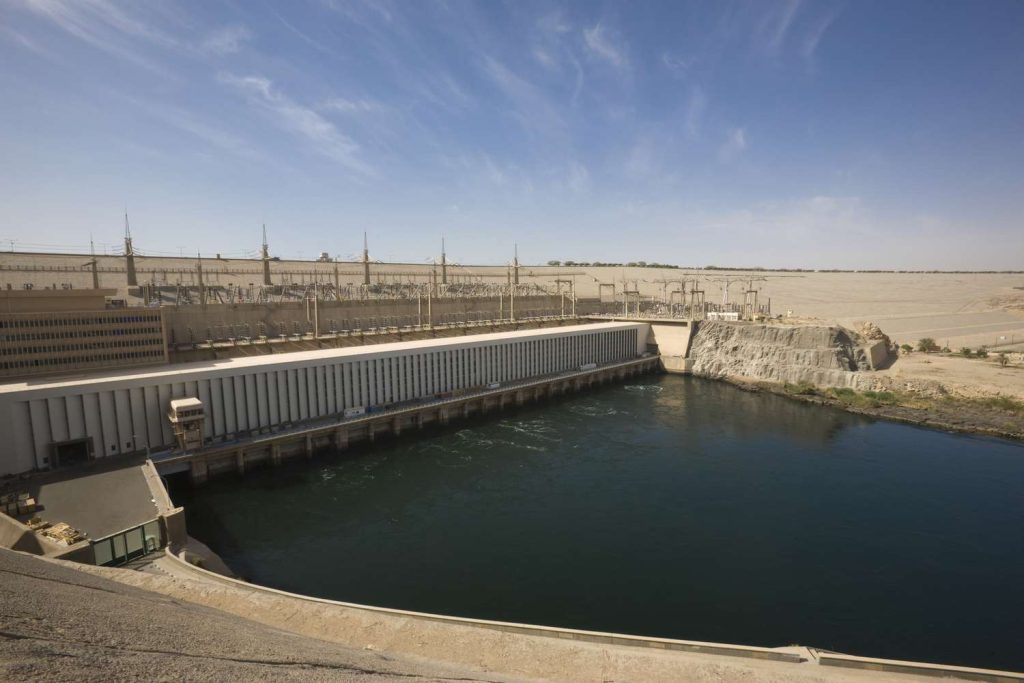
Key Takeaways
- The Aswan Dam is one of the world’s largest embankment dams.
- It was constructed between 1960 and 1970.
- The dam stands 111 meters high.
- It has been crucial in controlling the Nile’s waters.
- The dam is considered an Engineering Marvel of the Nile.
The Birth of a Monumental Project on the Nile
The Nile’s floods brought nutrient-rich silt, making the land good for farming. This allowed ancient Egypt to thrive. The river’s role is deep in Egypt’s culture and economy, with farming being key.
Egypt’s Historical Relationship with the Nile
The Nile’s floods brought nutrient-rich silt, making the land good for farming. This allowed ancient Egypt to thrive. The river’s role is deep in Egypt’s culture and economy, with farming being key.
The Vision Behind Controlling the World’s Longest River
The Aswan Dam aimed to control the Nile’s floods. It ensured a steady water supply for farming and provided power. This vision included:
- Regulating the Nile’s floods to protect farms and ensure stability.
- Creating a reservoir for steady irrigation.
- Generating power to meet Egypt’s growing energy needs.
Building the Aswan Dam was a huge challenge. It needed advanced engineering and a lot of money. It was a major step in Egypt’s growth, aiming to use the Nile’s power for good.
Fact1: The Aswan Dam System Features Two Distinct Structures
The Aswan Dam in Egypt is not just one dam. It’s a system of two dams that manage the Nile’s waters. This setup helps control the Nile’s floods and supplies water for farming and electricity.
The British-Built Aswan Low Dam of 1902
The British built the Aswan Low Dam in 1902. It was the first try to tame the Nile’s waters. The dam created a reservoir to hold water during floods for the dry season.
The Massive Aswan High Dam of 1970
The Aswan High Dam was finished in 1970. It’s a huge dam that changed Egypt’s farming and energy. It’s 111 meters high and 3,830 meters long, making it one of the biggest dams globally.
How Both Dams Function as a Comprehensive System
The Aswan Low Dam and the Aswan High Dam work together. They manage the Nile’s waters and offer many benefits. This system helps control floods, boosts farming, and creates electricity.
The Strategic location of Aswan Dam
The Aswan Dam, sometimes referred to as the High Dam, is situated in the Aswan Governorate in southern Egypt, some 13 kilometers (8 miles) south of the city of Aswan. Near the First Cataract, it crosses the Nile River at one of its narrowest places. Constructed in 1970, the enormous rock-fill dam was formally inaugurated in 1971.
Aswan Dam Location
Difference Between Aswan High Dam & Aswan Low Dam.
| Dam Characteristics | Aswan Low Dam | Aswan High Dam |
|---|---|---|
| Construction Year | 1902 | 1970 |
| Height (meters) | 36 | 111 |
| Length (meters) | 1,953 | 3,830 |
The Aswan Dam system shows Egypt’s skill in using the Nile River’s power. It brings big economic and social gains to the country.
Fact2: Cold War Politics Dramatically Shaped the Dam’s Construction
The Aswan High Dam was more than just an engineering marvel. It was also a key part of the Cold War. At first, Western powers backed the project. But as the Cold War grew, things changed a lot.
Western Funding Withdrawal and Political Tensions
In the mid-1950s, the U.S. and U.K. agreed to fund the dam. But this support didn’t last long because of growing political tensions. The West pulled out because of Egypt’s closer ties with the Soviet Union and the nationalization of the Suez Canal.
Soviet Union’s $1.1 Billion Investment and Technical Support
When the West pulled out, the Soviet Union stepped in. They gave Egypt a $1.1 billion loan and a lot of technical help. This was key for Egypt to finish the dam, changing the Cold War’s landscape.
| Aspect | Western Contribution | Soviet Union Contribution |
|---|---|---|
| Financial Support | Initially agreed, later withdrawn | $1.1 billion loan |
| Technical Expertise | Limited after withdrawal | Significant technical support |
How Geopolitics Influenced the Dam’s Design and Implementation
The Cold War’s politics deeply affected the Aswan High Dam. The Soviet Union’s help gave the dam the money and tech it needed. This made the dam a symbol of engineering and Cold War rivalry.
The Aswan High Dam shows how politics can change big projects. The switch from Western to Soviet support changed the dam’s finances and tech. It shows how global politics shape important projects.
Fact3: The Aswan Dam Created Lake Nasser, Among the World’s Largest Artificial Lakes
Lake Nasser is one of the world’s biggest artificial lakes. It was made by the Aswan Dam. This huge lake changed the area’s ecology and is key to Egypt’s water management.
The Staggering Dimensions of Lake Nasser
Lake Nasser is about 550 kilometers long and up to 35 kilometers wide. It covers around 5,250 square kilometers. Its size shows how big the Aswan Dam project was.
Ecological Transformation of the Region
Lake Nasser’s creation changed the area’s ecology. It became a home for many aquatic life forms. This change affected the local ecosystem in several ways.
- Changes in water quality due to the accumulation of sediments
- Introduction of new aquatic species
- Shifts in the local microclimate
Water Management Challenges and Solutions
Managing Lake Nasser’s water is hard. It involves controlling levels, preventing sediment, and sharing water fairly. Egypt has found ways to tackle these issues.
- Monitoring water levels and adjusting releases accordingly
- Implementing sediment management techniques
- Coordinating with neighboring countries on water sharing agreements
Managing Lake Nasser well is essential for Egypt’s water needs. As a huge artificial lake, it’s crucial for the area’s ecology and economy.
Fact4: Engineering Specifications of the Aswan Dam Reveal Its Massive Scale
The Aswan High Dam is a huge achievement in engineering. It shows how far humans can go with their skills. Building it was a huge challenge that needed careful planning and hard work.
The Dam’s Impressive Dimensions
The Aswan High Dam is 111 meters high and 3,830 meters long. It’s one of the biggest dams globally. Its size helps control the Nile River and gives Egypt power from water.
Construction Materials and Structural Design
Construction Materials and Structural Design
Building the dam needed lots of materials, like 43 million cubic meters of concrete. The design was made to handle the water’s pressure. It makes sure the dam stays strong and stable.
The 10-Year Construction Timeline
The dam took 10 years to build, from 1960 to 1970. It was a long time because of its size and complexity. Thousands of workers and engineers were involved.
The engineering of the Aswan Dam shows its huge size and the hard work put into it. Its height, length, and materials make it a true marvel of engineering.
Fact5: The Dam Powers Egypt Through Significant Hydroelectric Generation
The Aswan High Dam is a key source of hydroelectric power for Egypt. It has 12 Francis turbines that can produce 2,100 MW of power.
The 12 Francis Turbines Producing 2,100 MW
The installation of 12 Francis turbines at the Aswan High Dam is a major engineering feat. These turbines use the Nile River’s energy to make electricity. They are crucial for Egypt’s power needs.
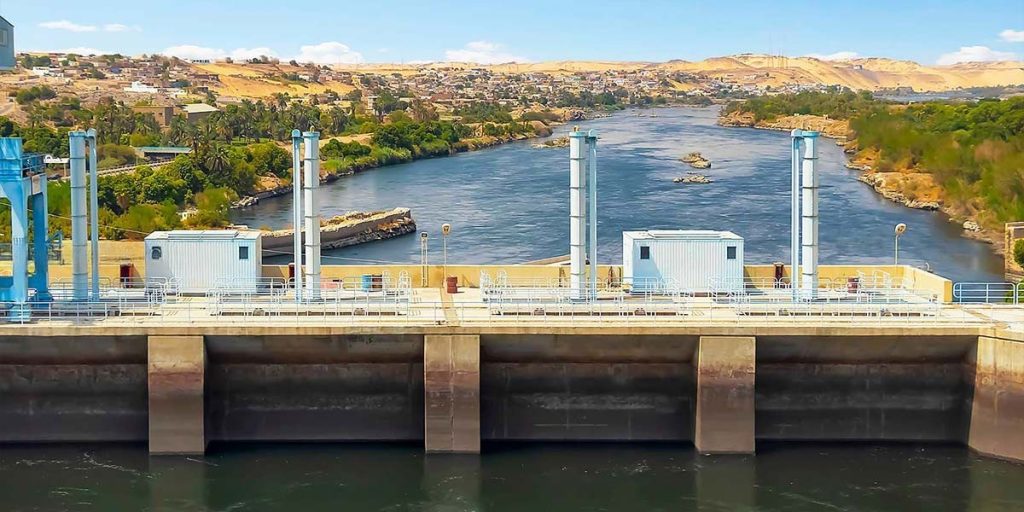
Annual Power Generation Exceeding 10,000 GWh
The Aswan High Dam generates over 10,000 GWh of power each year. This is a big part of Egypt’s energy system. It helps meet the country’s electricity needs.
Impact on Egypt’s National Electricity Grid
The power from the Aswan High Dam is very important for Egypt’s electricity grid. It helps reduce the use of fossil fuels. This makes Egypt’s energy mix more sustainable.
| Year | Power Generation (GWh) |
|---|---|
| 2010 | 9500 |
| 2015 | 10,200 |
| 2020 | 10,500 |
Fact6: The UNESCO-Led Rescue of Abu Simbel Required Unprecedented Engineering
The Aswan High Dam’s creation of Lake Nasser threatened to engulf the ancient temples of Abu Simbel. This led to a massive rescue effort. The dam’s construction formed one of the world’s largest artificial lakes, putting the 3,000-year-old temples at risk of being submerged.
International Preservation Efforts
Relocation of Ancient Temples
A UNESCO-led campaign was launched to save the Abu Simbel temples. This effort involved a $40 million international preservation campaign. It was a monumental task that required relocating not just the temples but also other archaeological sites in the region.
The rescue operation was a complex engineering feat. It involved cutting and relocating 20 ancient temples. The temples were carefully dismantled, moved to higher ground, and reassembled to preserve their historical integrity.
The relocation process showed human ingenuity and the importance of preserving cultural heritage. The temples were moved piece by piece to a location 60 meters above and 200 meters back from their original site. This task required precise planning and execution.

Modern Tourism at Rescued Sites
Today, the rescued archaeological sites, including the Abu Simbel temples, are major tourist attractions. Visitors from around the world come to marvel at the ancient structures. They appreciate the monumental effort that went into saving them.
The successful preservation of the Abu Simbel temples saved a significant part of human history. It also boosted tourism in the region, contributing to the local economy.
Fact7: The Aswan Dam Transformed Egyptian Agriculture Forever
The Aswan Dam has changed Egyptian farming by letting farmers grow three crops a year. This big change has made farming more productive. It also helps meet the food needs of Egypt’s growing people.
Shift to Triple Cropping
The dam controls the Nile’s water, helping farmers grow three crops instead of one. This has greatly increased crop yields. It has also made food more secure for everyone.
Protection from Devastating Floods and Droughts
The Aswan Dam keeps the Nile’s water steady, protecting farmers from floods and droughts. This stability lets farmers plan better. It reduces the risks of unpredictable water supplies.
New Agricultural Lands Reclaimed
The creation of Lake Nasser and controlled water release have made new land for farming. This has helped Egypt’s farming and economy grow.
| Benefits | Description | Impact |
|---|---|---|
| Triple Cropping | Increased agricultural productivity | Improved food security |
| Flood Protection | Regulation of the Nile’s waters | Reduced risk for farmers |
| Agricultural Expansion | Reclamation of new lands | Economic growth |
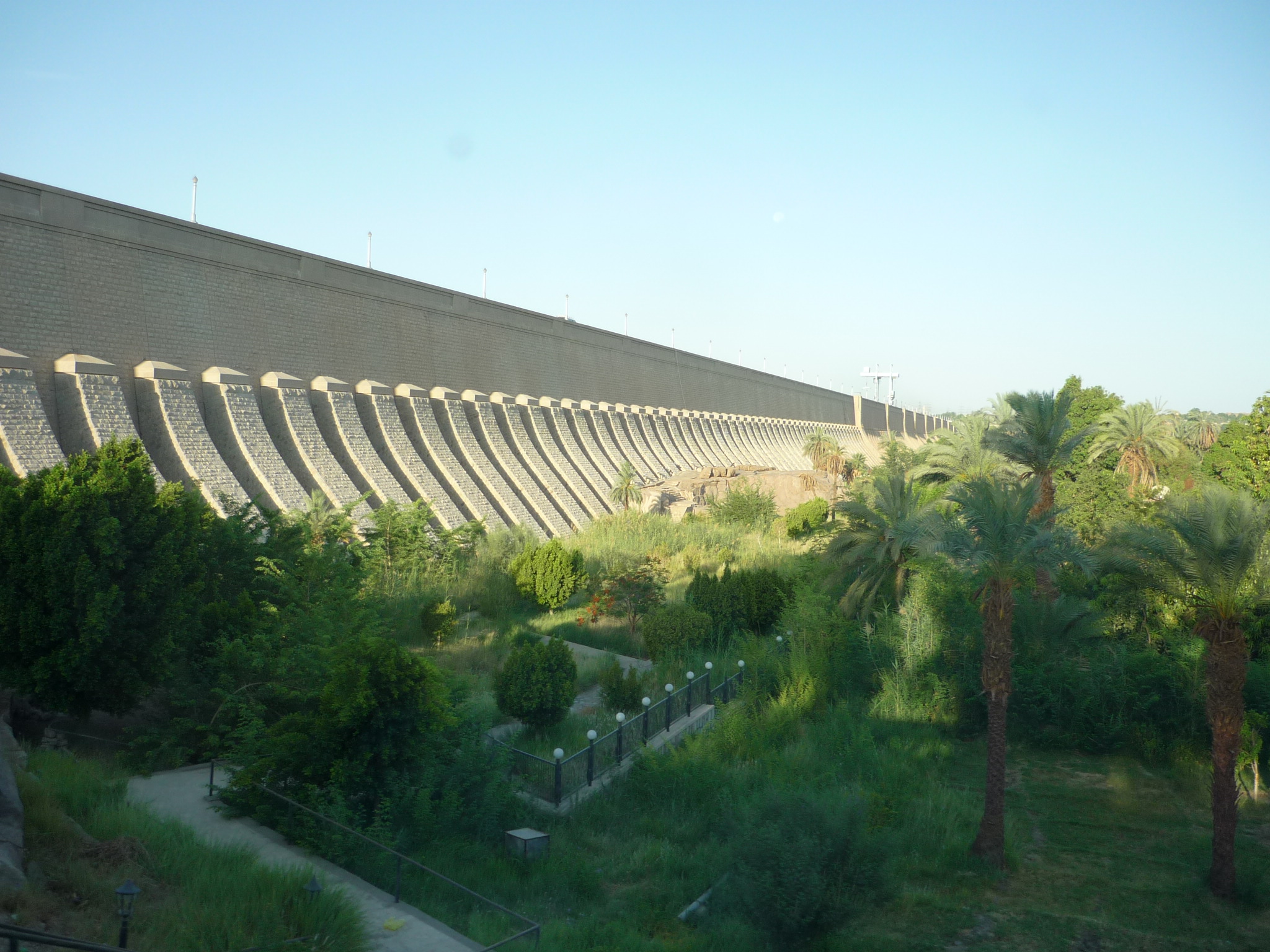
The Aswan Dam has had a huge impact on Egyptian farming. It has changed the sector and helped Egypt’s economy grow. The dam’s benefits, like triple cropping, flood protection, and new land for farming, are key to Egypt’s success in farming.
Environmental Consequences: The Unexpected Ecological Impact
The Aswan Dam has many benefits but also big ecological problems. Changing the Nile’s flow has caused issues that weren’t seen before it was built.
Loss of Fertile Nile Silt Downstream
The Aswan Dam has cut down on fertile Nile silt going downstream. Before the dam, the Nile’s yearly flood brought silt full of nutrients. This made the land great for farming. Now, the dam holds back this silt, making the soil less fertile.
Increased Soil Salinity and Fertilizer Requirements
Without the silt, soil has become saltier and needs more fertilizers. Farmers use a lot of chemical fertilizers. This harms the environment and pollutes water.
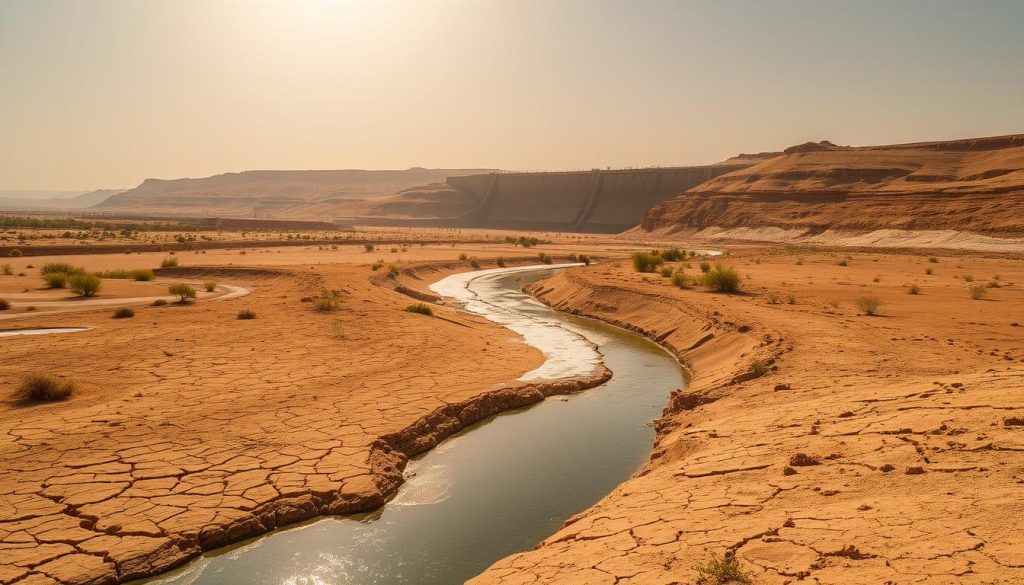
Changes to Mediterranean Fish Populations
The Aswan Dam has also hurt fish in the Mediterranean Sea. Less nutrient-rich water from the Nile affects fish populations. This changes the marine ecosystem.
| Environmental Impact | Description | Consequences |
|---|---|---|
| Loss of Fertile Silt | Traping of silt behind the dam | Decreased soil fertility downstream |
| Increased Soil Salinity | Lack of annual silt deposits | Greater need for fertilizers |
| Changes in Fish Populations | Reduction in nutrient-rich waters | Impact on marine ecosystem |
The Aswan Dam shows how big projects can affect the environment. It’s important to understand these effects to manage and lessen harm.
Economic Benefits and Costs of the Aswan Dam After Five Decades
The Aswan Dam has had a big impact on Egypt’s economy. It has helped the country grow in many ways.
Contribution to Egypt’s Industrial Development
The dam gives Egypt a steady power supply. This has helped industries like manufacturing and textiles grow. The World Bank says the dam has boosted Egypt’s industry by 15%.
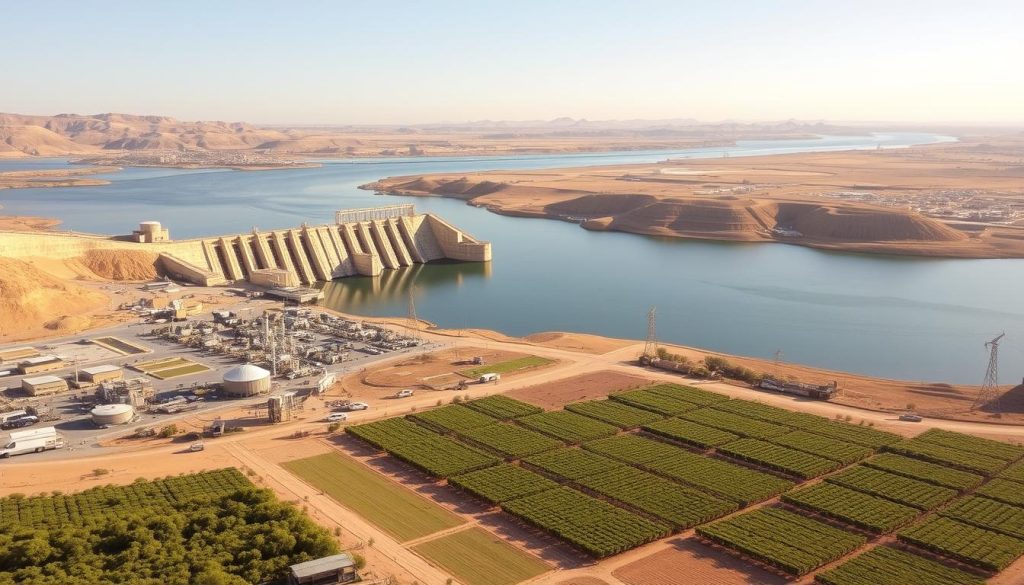
Tourism Revenue Generated Around Lake Nasser
Lake Nasser has become a hit for tourists. Cruise ships and adventure seekers flock there. This has brought in a lot of money for the local economy.
It has also created jobs. Local businesses have seen an increase in customers.
Long-term Return on the $1 Billion Investment
Looking at the dam’s return on investment, we see both direct and indirect benefits. It has given Egypt electricity, controlled floods, and created a big lake for fishing and tourism. The dam has been a good investment for Egypt’s economy.
In summary, the Aswan Dam has been key to Egypt’s economic growth. Its benefits will keep helping the country for many years.
Water Security Challenges in the 21st Century
Egypt’s water future is at risk due to climate change and the Grand Ethiopian Renaissance Dam. The Aswan Dam has helped manage water, but new issues need attention.
Managing Water Resources During Climate Change
Climate change is changing how rain falls and making extreme weather more common. This affects the Nile’s flow and Egypt’s water security. Warmer temperatures will also make Lake Nasser lose more water, hurting irrigation and other uses.
Table: Impact of Climate Change on Nile River Flow
| Climate Change Factor | Impact on Nile Flow | Consequence for Egypt |
|---|---|---|
| Increased Temperature | Higher Evaporation from Lake Nasser | Reduced Water Availability |
| Changing Precipitation Patterns | Variable Nile Flow | Increased Flood or Drought Risk |
The Grand Ethiopian Renaissance Dam Controversy
The Grand Ethiopian Renaissance Dam has caused a big debate over Nile water sharing. Egypt worries the dam will cut down the Nile’s flow, harming its water and farming.
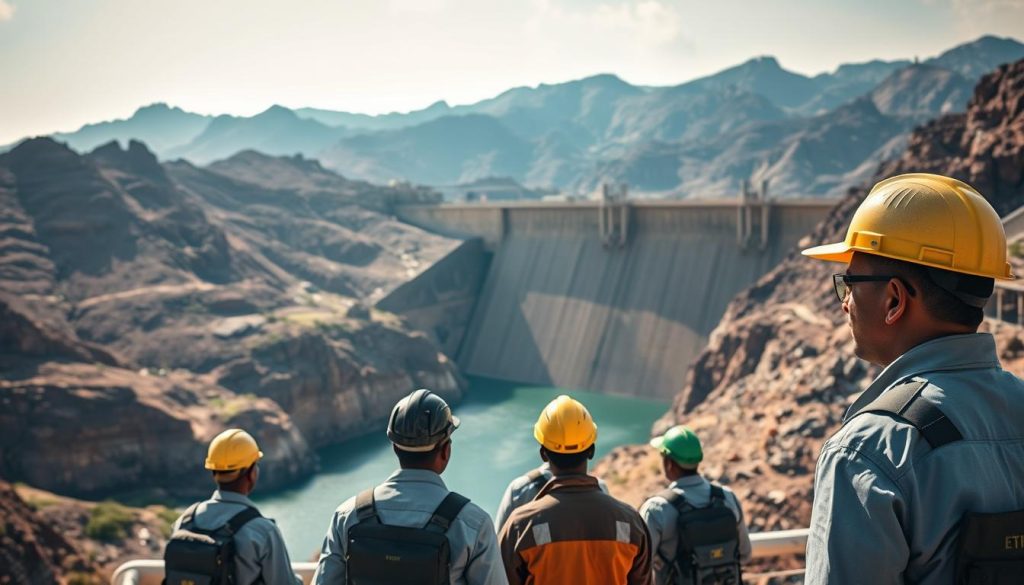
Future Scenarios for Nile Basin Water Sharing
The Nile’s future depends on talks and agreements between countries. Working together can lessen climate change’s effects and protect water for everyone.
Handling these issues well is key to keeping water safe in the region. By understanding climate change and new projects, Egypt and others can use the Nile wisely and fairly.
How to Reach the Aswan High Dam
The best way to reach the Aswan High Dam is by joining an Aswan day tour, which combines your visit to the dam with nearby historical and cultural attractions.
What to Visit Near the Aswan Dam
- Philae Island – Island temple or Philae Temple dedicated to Isis.
- Unfinished Obelisk – Ancient stone-carving site.
- Nubian Village – Colorful village showcasing Nubian culture.
Recommended Tour Packages for visiting the Aswan High Dam
| Package Name | Bonus | Click to view Itenerary |
|---|---|---|
| 8 Days Best Egypt Trip – Cairo and Nile Cruise | 5% Off! | View Itinerary |
| 8 Days Egypt Luxury Tour – Cairo & Nile Cruise | 10% Off! | View Itinerary |
| 7 Days Cairo Nile Cruise: Amazing Luxury Adventure | Get Free Activity! | View Itinerary |
| 6 Days Cairo, Luxor, Aswan & Abu Simbel | Get Free Activity! | View Itinerary |
Book with Touring in Egypt now and make your dream trip to the Aswan High Dam a reality!
Conclusion: The Enduring Legacy of Egypt’s Aswan Dam
The Aswan Dam is a symbol of human creativity and engineering skill. It has changed Egypt in many ways. It has improved farming, created a lot of electricity, and managed the Nile’s water.
This dam is more than just a structure. It has become a key part of Egypt’s identity and history. Its impact is seen in Egypt’s economy and daily life.
The dam helps Egypt grow by controlling the Nile’s water. It has allowed for more crops each year. This has helped protect Egypt from floods and droughts.
The Aswan Dam is essential for Egypt’s future. It plays a big role in the country’s plans for the 21st century. It helps with water security and supports Egypt’s growing needs.
